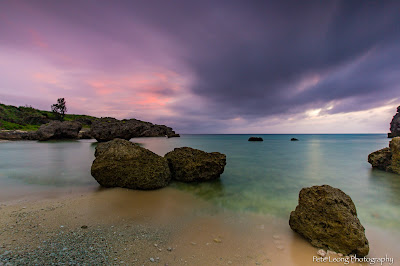ISO's and F stops ?? what the hell does it mean anyway?
Had a few emails lately asking about ISO and F-stops and what they mean. So heres a very basic answer to get you on your way.
ISO (International Organization for Standardization) is very important to know about on your camera. It refers to the sensitivity of the sensor on a digital camera or sensitivity of film.
Basically a low ISO like 100 is less sensitive than say 400 or 1000. So with ISO 100 you will get less grain or digital noise than with ISO 1000 at the expense of having to use a slower shutter speed or faster aperture to gather enough light.
ISO 400 and above is generally used for freezing action or low light situations as it allows you to use faster shutter speeds with less light at the expense of having more grain or digital noise in your image.
Most point and shoot cameras have a very limited ISO range and in my experience anything over 400 is too noisy and unusable. Digital SLR's fair a lot better and these days with cameras like the Nikon D3 and other high end cameras you can shoot with very sensitive ISO ratings like 1600 and above with little noise and very usable images.
f2.8, f4, f16 what does it all mean???
When you see a little f and a number on your lens or hear people talking about f-stops they are talking about the aperture of a lens.
So basically the lens aperture is a set of blades that form a circle to let a certain amount of light onto the film or sensor. The number or f-stop refers to the size of the circle or opening and thus the amount of light coming in.
F-stops can be very confusing for the beginner because when we talk about a bigger F number it is actually a lower number, and a smaller f number would be a higher number. i.e f1.4=BIG ~ f32=small

So f2.8 is a much bigger hole than say f16 so we say f2.8 is faster because more light can come in. Generally only fixed focal length (prime) or more expensive zoom lenses have a f2.8 aperture or bigger.
The aperture not only controls the amount of light coming in but also controls the amount of the image in focus (depth of field).
Basically f1.2 will produce a very small amount of the image being in focus with the foreground and background being blurry (bokeh), where as using say f16 will produce a large depth of field and almost everything from front to back will be in sharp focus.
Other factors also come into play such as the focal length of the lens and distance to subject etc. but thats it for the basics.
Hope this helps!
If you would like to learn more or ask questions about photography, come on over to Pete Leong photography facebook group and join up
http://www.facebook.com/group.php?gid=9136474022
Happy shooting!!
ISO (International Organization for Standardization) is very important to know about on your camera. It refers to the sensitivity of the sensor on a digital camera or sensitivity of film.
Basically a low ISO like 100 is less sensitive than say 400 or 1000. So with ISO 100 you will get less grain or digital noise than with ISO 1000 at the expense of having to use a slower shutter speed or faster aperture to gather enough light.
ISO 400 and above is generally used for freezing action or low light situations as it allows you to use faster shutter speeds with less light at the expense of having more grain or digital noise in your image.
Most point and shoot cameras have a very limited ISO range and in my experience anything over 400 is too noisy and unusable. Digital SLR's fair a lot better and these days with cameras like the Nikon D3 and other high end cameras you can shoot with very sensitive ISO ratings like 1600 and above with little noise and very usable images.
f2.8, f4, f16 what does it all mean???
When you see a little f and a number on your lens or hear people talking about f-stops they are talking about the aperture of a lens.
So basically the lens aperture is a set of blades that form a circle to let a certain amount of light onto the film or sensor. The number or f-stop refers to the size of the circle or opening and thus the amount of light coming in.
F-stops can be very confusing for the beginner because when we talk about a bigger F number it is actually a lower number, and a smaller f number would be a higher number. i.e f1.4=BIG ~ f32=small

So f2.8 is a much bigger hole than say f16 so we say f2.8 is faster because more light can come in. Generally only fixed focal length (prime) or more expensive zoom lenses have a f2.8 aperture or bigger.
The aperture not only controls the amount of light coming in but also controls the amount of the image in focus (depth of field).
Basically f1.2 will produce a very small amount of the image being in focus with the foreground and background being blurry (bokeh), where as using say f16 will produce a large depth of field and almost everything from front to back will be in sharp focus.
Other factors also come into play such as the focal length of the lens and distance to subject etc. but thats it for the basics.
Hope this helps!
If you would like to learn more or ask questions about photography, come on over to Pete Leong photography facebook group and join up
http://www.facebook.com/gr
Happy shooting!!


Comments